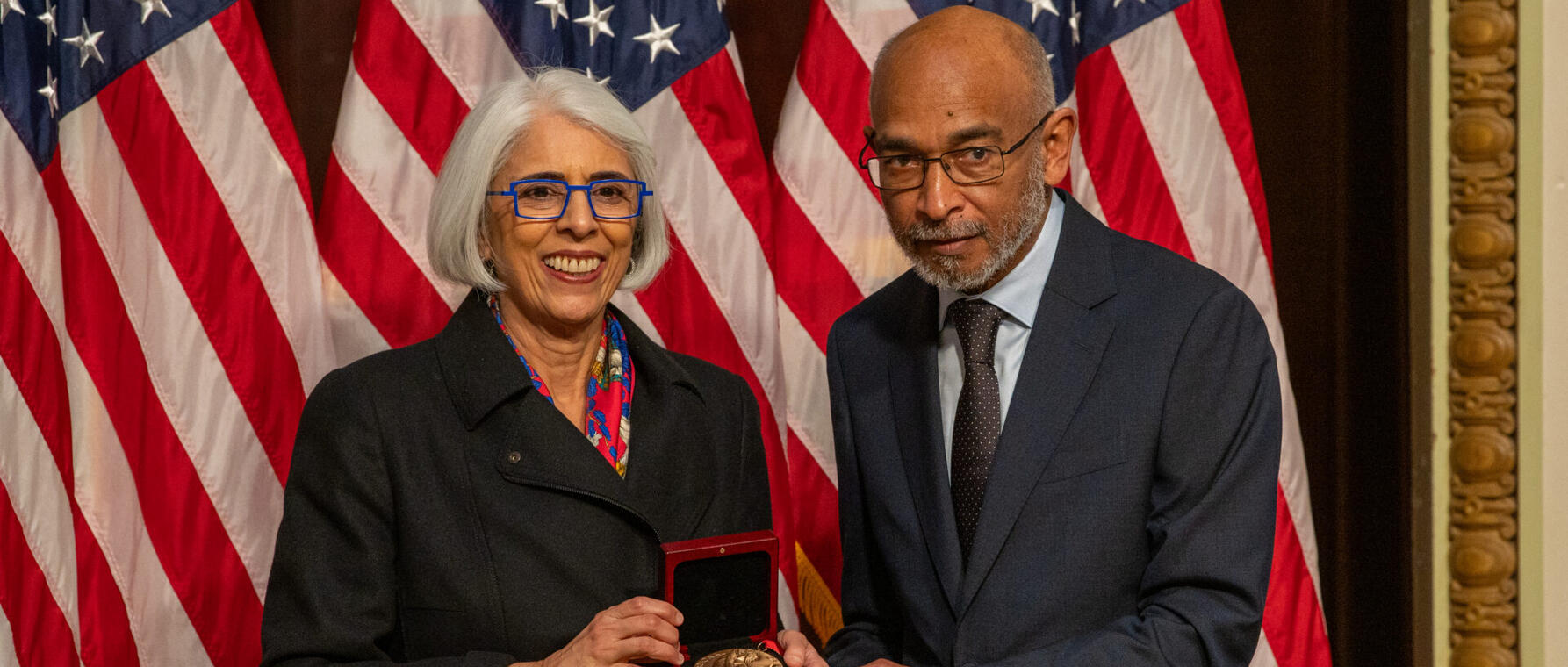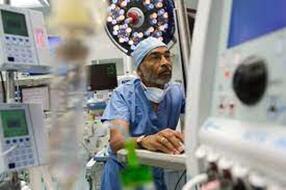Alumnus Receives National Medal of Science
Emery N. Brown honored for work with anesthesia, neuroscience, and statistical analysis

Emery N. Brown, AB '78, MD '83, PhD '88, was awarded the National Medal of Science in a ceremony at the White House on January 3, 2025. Recognized for his groundbreaking contributions at the intersection of neuroscience, anesthesia, and statistical analysis, Brown's work is reshaping medical practice and scientific understanding alike.
At the heart of Brown's research is his work on developing advanced algorithms that allow anesthesiologists to tailor treatment plans based on predictive models. "A highlight of Brown's work is the development of sophisticated algorithms that predict how patients will respond to anesthesia," notes the National Science and Technology Medals Foundation (NSTMF) video produced to accompany the award.
These innovations, which draw heavily on Brown's expertise in both statistics and medicine, address fundamental challenges in anesthesiology. His application of real-time EEG monitoring and closed-loop control systems stands out as a major advancement in the field. "By looking at the patterns in an electroencephalogram (EEG), an anesthesiologist can modulate the dosage of a patient’s drugs," Brown explains. This allows clinicians to "find the amount of anesthesia that someone can best tolerate while remaining unconscious to the painful stimuli of surgery," particularly in vulnerable populations such as older patients who are at risk of cognitive issues post-surgery.
Brown's work is also notable for its broader impact on neuroscience. By using anesthesia as a window into the brain's complex workings, Brown provides new insights into how it processes information, alters under anesthesia, and safely returns to consciousness. “[His] exploration of the brain's complex workings raises new questions that continue to push the boundaries of what we know," wrote the NSTMF.
By looking at the patterns in an electroencephalogram (EEG), an anesthesiologist can modulate the dosage of a patient’s drugs. [This allows clinicians to] find the amount of anesthesia that someone can best tolerate while remaining unconscious to the painful stimuli of surgery.
—Emery N. Brown, PhD ’88
Brown holds dual appointments as the Warren M. Zapol Professor of Anaesthesia at Harvard Medical School and Massachusetts General Hospital, as well as the Edward Hood Taplin Professor of Medical Engineering and Computational Neuroscience at MIT. These roles uniquely position him to foster interdisciplinary collaboration and innovation, driving forward the understanding of both neuroscience and anesthesiology.
Brown says he cultivated an interdisciplinary approach to science at Harvard. "I began to realize that the approaches and techniques that they were using could be used to study neurology, neurosurgery, psychiatry, sleep medicine,” he says. “They're all part of what I call the clinical neuroscience disciplines."

Reflecting on his academic path, Brown recounts the challenges he faced as a student pursuing dual interests in statistics and medicine at a time when such a combination was not yet appreciated. "When I was interviewing with MD-PhD programs across the country," he recalls, "people were confused. It was 1977 or 1978, before the revolution in computation and AI that we've seen in recent years." Despite these challenges, Brown received encouragement from his undergraduate advisor, Professor Fred Mosteller, who thought it was "a very good idea" to pursue this unconventional path.
This support proved vital as Brown navigated his way through academia, eventually leading to his innovative work today. During his graduate studies, under the mentorship of Professor Peter Huber, Brown explored circadian rhythms—a discovery that became foundational to his dissertation and future research.
Brown's receipt of the National Medal of Science recognizes his dual role as a scientist who applies mathematical principles to solve pressing medical problems and an educator who inspires the next generation of researchers. As he continues to explore and innovate, the NSTMF wrote, "Dr. [Emery N.] Brown is reshaping the future of both neuroscience and anesthesiology and opening new avenues for exploration."
This article was engineered and edited by Paul Massari. Draft copy generated by GPT 4.0.
Banner: Arati Prabhakar, Ph.D., Director of the White House Office of Science and Technology Policy (OSTP), awards Emery N. Brown the National Medal of Science during an awards ceremony at the Eisenhower Executive Office Building in Washington, DC, January 3, 2025. / Photo by Ryan K. Morris
Get the Latest Updates
Join Our Newsletter
Subscribe to Colloquy Podcast
Simplecast





